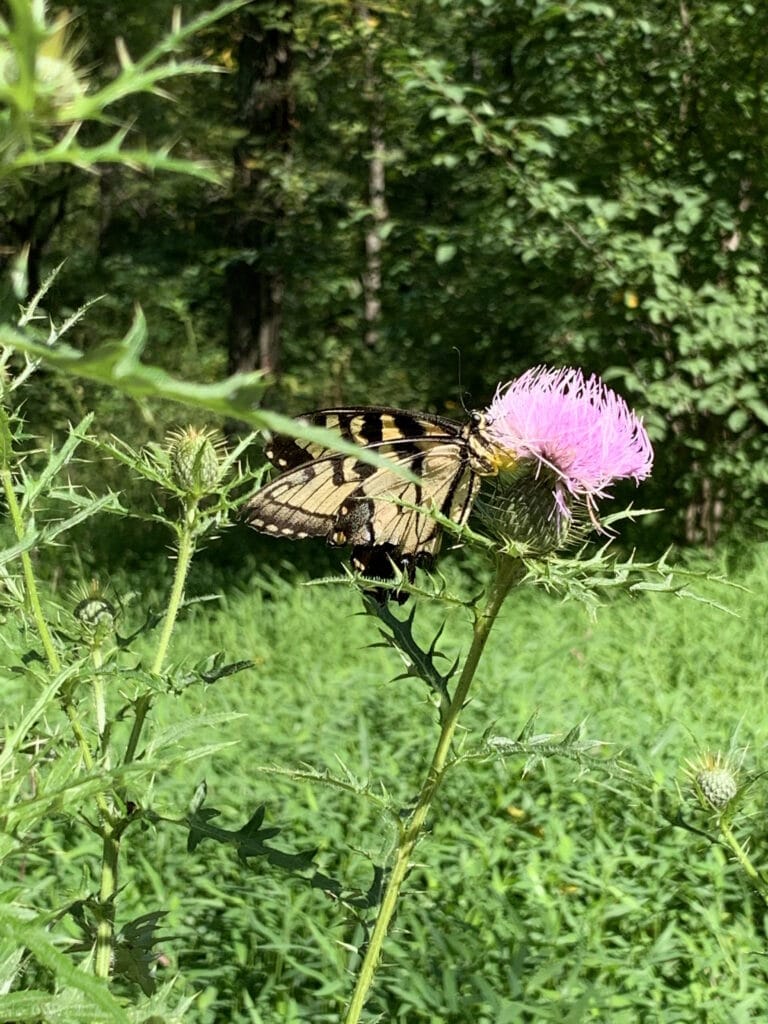
Sky Meadows State Park – Labor Day 2020
In the tradition of the Mindfulness (Vipassana) practice, we shift from focusing on the content of thought to the process of thinking, we move from focusing on thinking in the mind to the experience of how is it in the body.
Recognising thinking to the process of thinking
Last week we explored recognising thinking, realising when we are thinking about planning or remembering as well as rumination. This week, we familiarise ourselves with the process of thinking itself. When I notice the first thought I have upon awaking is about planning, what is behind it? Anxiety? If so, I need to attend to the anxiety. When I feel anger, is there hurt associated with it which needs to be cared for. Occasional checking-in can provide insight. What is the pace of my thinking? Is it hectic? If so, I need to relax and soften to slow it down.
Do we think in words or images?
If we think in words, how about imagining the thinking is happening in a language that is not familiar to us. So we have no idea of what the thinking is about – what is being said. But we are curious about the emotions that they are expressing – the emotional tone of the voice: is it calm or agitated? Especially in moments when we feel really frustrated, observe the quality and the process of thinking. Is there annoyance, disappointment or a sense of hopelessness? Or contrariwise how does it feel when someone was kind or appreciated you? Noticing the quality of my thinking when my teenager patiently helps me with a technology issue, which comes so easy for her? Is there a location in the body where these words are coming from? Or is there a screen where these images are projected?
Connecting thinking to physical experience, a felt-sense
What are the physical sensations that arise with thinking? Is the forehead smooth or furrowed? The area around the eyes, relaxed or tight? Are the shoulders lifted? Is the belly contracted or relaxed? These are all physical sensations of thinking. It’s as if the nervous system were reaching down to the body and preparing various muscles to fight, flee or freeze. When we actually locate the thoughts in the body, we might discover that they are only a small piece of us, with so many other emotions, feelings and sensations that make up this being. Thinking is just a small part of me, there are all these other parts – the body, the heart, a sense of presence. When we see the thinking in this way, is there a possibility of shifting our relationship to it?
When the news makes me feel righteous and like the Other is monstrous
Through the course of the day, when things are intense, I have to remember Mahatma Gandhi’s words: “Intolerance is itself a form of violence and an obstacle to the growth of a true democratic spirit.”
During the height of Cambodia’s gruesome civil war, the Buddhist monk Maha Ghosananda (known as the Mahatma Gandhi of Cambodia) would knock on peoples’ doors with the message, “Put down your weapon and kill the hatred in your hearts.” Some years later he was speaking at an anti-landmine rally in DC: “These landmines started in some hearts as hatred, so we have to get rid of the hatred from the hearts first before we can get rid of [the landmines] from the earth.”
This is the importance of self-reflection, questioning what am I doing with all this thinking. Is it beneficial? Watch the process of my thinking, so that I can keep the hatred out of my heart.
